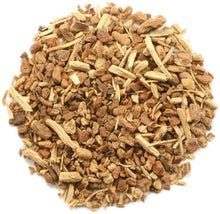What is Sarsaparilla?
Sarsaparilla is a tropical plant from the genus Smilax. The climbing, woody vine grows deep in the canopy of the rainforest. It’s native to South America, Jamaica, the Caribbean, Mexico, Honduras, and the West Indies.
For centuries, indigenous people around the world used the root of the sarsaparilla plant for treating joint problems like arthritis, and for healing skin problems like psoriasis, eczema, and dermatitis. The root was also thought to cure leprosy due to its “blood-purifying” properties.
Sarsaparilla was later introduced into European medicine and eventually registered as an herb in the United States Pharmacopoeia to treat syphilis.
BENEFITS
1. Psoriasis
The benefits of sarsaparilla root for treating psoriasis were documented decades ago. One study Trusted Source found that sarsaparilla dramatically improved skin lesions in people with psoriasis. The researchers hypothesized that one of sarsaparilla’s main steroids, called sarsaponin, is able to bind to endotoxins responsible for the lesions in psoriasis patients and remove them from the body.
2. Arthritis
Sarsaparilla is a potent anti-inflammatory. This factor makes it also a useful treatment for inflammatory conditions like rheumatoid arthritis and other causes of joint pain and the swelling caused by gout.
3. Syphilis
Sarsaparilla has shown activity against harmful bacteria and other microorganisms that have invaded the body. Though it may not work as well as modern day antibiotics and antifungals, it has been used for centuries to treat major illnesses like leprosy and syphilis. Syphilis is a sexually transmitted disease caused by a bacterium. Leprosy is another devastating infection caused by bacteria.
The antimicrobial activity of sarsaparilla has been documented in recent studies. One paper looked at the activity of over 60 different phenolic compounds isolated from sarsaparilla. Researchers tested these compounds against six types of bacteria and one fungus. The study found 18 compounds that demonstrated antimicrobial effects against the bacteria and one against the fungus.
4. Cancer
A recent study showed that sarsaparilla had anticancer properties in cell lines of multiple types of cancers and in mice. Preclinical studies in breast cancer tumours and liver cancer have also shown the antitumor properties of sarsaparilla. More research is needed to find out if sarsaparilla can be used in cancer prevention and treatment.
5. Protecting the liver
Sarsaparilla has also shown protective effects on the liver. Research conducted in rats with liver damage found that compounds rich in flavonoids from sarsaparilla was able to reverse damage to the liver and help it function at its best.
6. Improving the bioavailability of other supplements
Sarsaparilla is used in herbal mixes to act as a “synergist.” In other words, it’s thought that the saponins found in sarsaparilla increase the bioavailability and absorption of other herbs.




